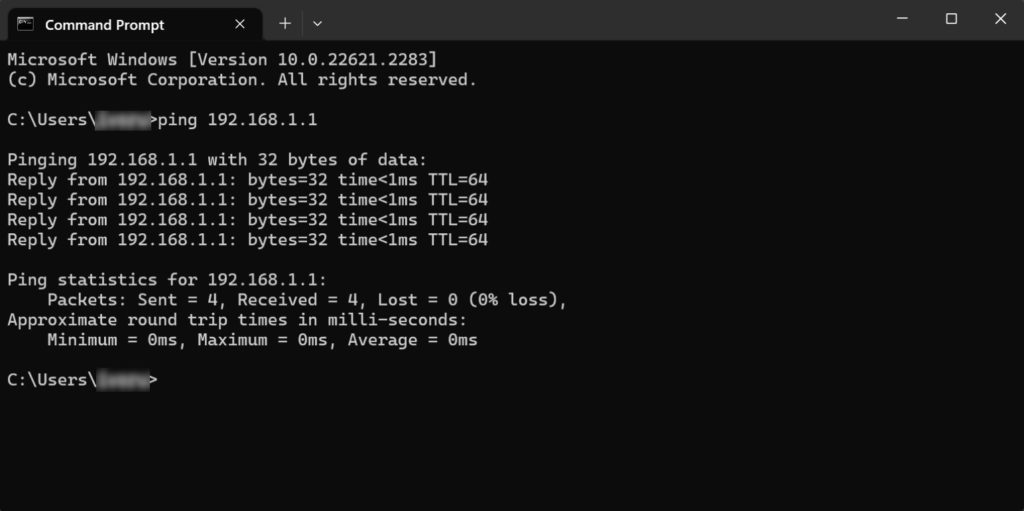Ping is one of the most basic and widely used tools in network and server administration. Basically, it is a utility that allows you to test whether or not a host on an Internet Protocol (IP) network can be reached using the ping command.
Ping is a colloquial term for Packet Internet or Inter-Network Groper. What the software does is help you determine whether or not a particular IP address exists on the Internet and whether or not it accepts data package requests. The term is derived from submarine terminology, for example where pinging describes the sound of a returned sonar pulse.
How Does the Ping Command Work
The principle of pinging is straightforward enough. The software, which typically comes as a built-in utility in your operating system, sends an Internet Control Message Protocol (ICMP) Echo request to the domain or IP address you specify. It waits for a response over the network, which should come once the host receives the hosts, which replies with the so-called “echo reply packet”. The ping command sends small packets of data, known as ping packets, to the target host to measure the response time. The results of this action are two-fold. First, it establishes that the host exists. Secondly, it determines the latency, or the round-trip time (RTT), which is the time necessary to receive a response from the host. RTT is one of the key metrics to rank the performance of literally all web applications we use on a day-to-day basis.
If the RTT is too long, that is an indication of some network problem, such as speed or routing issues, or network congestion, which can affect the user and overall connection speed. Because of this, pinging is almost always the first step in network diagnostics. Ping is a fundamental network utility used to diagnose connectivity issues and measure network performance.
Availability of the Ping test command in different operating systems
Because of how basic and necessary pinging is for network administration, it is available on virtually all operating systems that are being used at present. No matter whether you are using a Windows or a Mac computer, an iPhone or an Android mobile device, or even some rare Linux distribution, you can usually make use of pinging when setting up or testing a network. If, for some reason, the ping command returns a ‘destination host unreachable’ error message, it probably means that the computer is unable to establish a route to the specified destination host. Other common error messages include ‘general failure error’, which suggests issues with the device or network settings.
How to Ping an Internet Protocol (IP) Address on Windows Using Command Prompt
The steps for pinging an IP address on Windows 10 are as follows:
- Go to the Search bar in the lower-left corner of your screen and type “cmd”. That will bring up the Command Prompt app.
- Open the Command Prompt app, which is basically a black window with a console.
- Type “ping” in the console, hit Space, and type the IP address you’d like to ping. For instance 192.168.0.1.
- Hit Enter.

The ping utility will send at least three or four echoes, or ping requests and display the results in the console under the request you’ve just typed. Feel free to examine the results and determine whether there is a problem in the connection between your Windows device and the host IP, including latency issues.
How to Ping an Internet Protocol (IP) Address on MacOS
The steps for pinging an IP address on Windows 10 on MacOS are as follows:
- Open up the Finder application on your Mac OS laptop or desktop computer. You will find it by clicking the blue-grey icon in your Dock.
- Go to the Applications sub-menu to be found on the left side of the window that pops up. If you don’t see it, hit Command + A to bring in the search app while in the Finder window.
- Look for the Terminal app in the Applications menu, and open it.
- Type “ping” in the console, hit Space, and type the IP address you’d like to ping. For instance 192.168.0.1.
- Hit Enter.
The ping command is available on most operating systems, including MacOS, making it a versatile tool for network diagnostics.
The ping results will be displayed in the Console for you to examine them.
How to Ping an IP Address on Android and iOS
Android and iOS don’t have ping built in like Windows and MacOS, but you can still ping an IP on your phone or tablet by downloading a free app from the Google Play Store or App Store. Make sure your network adapter is set up to use the ping command on your router or mobile device. Ping is the most popular tool for that but there are many other free alternatives to test connectivity to specific IP addresses so just find the one that works for you.